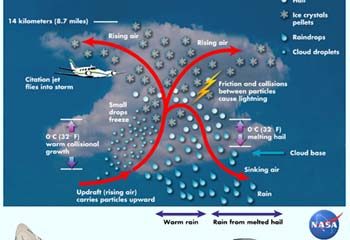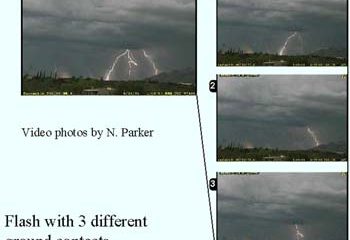Latest News

Is remote sensing the answer to today’s agriculture problems?
Wheat growers turn to aerial imagery to overcome economic, environmental challenges
Today’s wheat growers face many economic and environmental challenges, but arguably their greatest challenge is the efficient use of fertilizer.
Growers need to apply nitrogen-based fertilizer in sufficient quantities to achieve the highest possible crop yields without over-applying – a situation that could lead to serious environmental effects. In wheat, a critical factor comes down to

Early diagnosis of childhood diabetes
Diabetes is a chronic metabolic disorder that afflicts 17 million people in the United States and is the fourth leading cause of death. Over 2 million patients suffer from its most severe form – childhood diabetes – also known as Type 1, juvenile or insulin-dependent diabetes. We now understand that childhood diabetes is an autoimmune illness, where the body’s own white blood cells, which normally fight infection, turn and act against the body. These white blood cells target a specific group of

NASA scientists take first ’full-body scan’ of evolving thunderstorm
A doctor gets a better view inside a patient by probing the body with CAT and MRI scanning equipment. Now, NASA meteorologists have done a kind of “full-body scan” of an evolving thunderstorm in the tropics, using advanced radar equipment to provide a remarkable picture of the storm’s anatomy. The observations are expected to help double-check satellite rainfall measurements, improve computer models of storms, and make the skies safer for airplanes to navigate.
David Atlas of NASA’s Goddar

Lightning really does strike more than twice
NASA-funded scientists have recently learned that cloud-to-ground lightning frequently strikes the ground in two or more places and that the chances of being struck are about 45 percent higher than what people commonly assume.
Recently, William C. Valine and E. Philip Krider in the Institute of Atmospheric Physics at the University of Arizona, co-authors of the study, took to the field using video and other technology to study lightning, which is one of the biggest weather-related killers i

Growing human antibodies in algae
Inexpensive and fast route to large-scale production, say scientists at The Scripps Research Institute
A group of scientists at The Scripps Research Institute (TSRI) have used algae to express an antibody that targets herpes virus, describing the work in an upcoming issue of the journal Proceedings of the National Academy of Sciences.
This antibody could potentially be an ingredient in an anti-herpes topical cream or other anti-herpes treatments, but more importantly the alg

Herpes virus trashes detection mechanism to hide from immune system
Herpes viruses are notorious for their ability to hide from the immune system and establish lifelong infections. Researchers at Washington University School of Medicine in St. Louis have discovered how one mouse herpes virus escapes detection. The study appears in the January issue of the journal Immunity.
“These findings not only provide a better understanding of viral infections,” says study leader Ted H. Hansen, Ph.D., professor of genetics, “they also offer novel insights into basic cel











